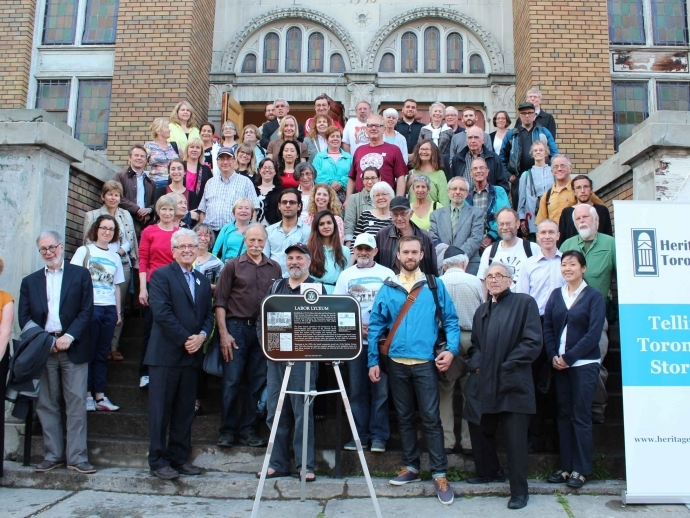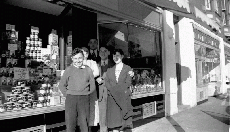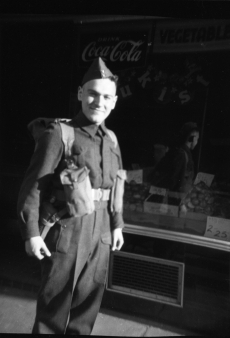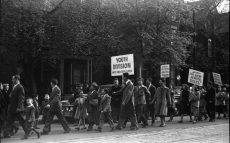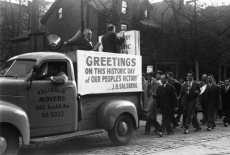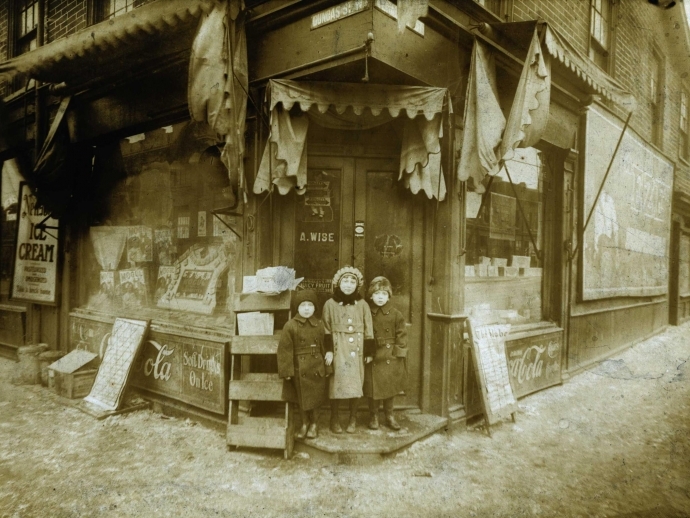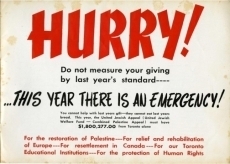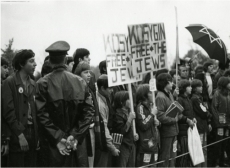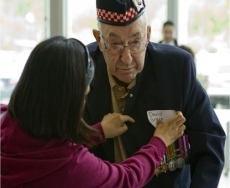This year marks the bicentennial of the War of 1812. Commemorative events are set to take place across the country this summer and while the Ontario Jewish Archives does not hold any material relevant to this war, conflict as a broader theme is ever-present within a number of fascinating archival collections. Material documenting the Jewish community’s involvement in a number of civil and human rights struggles has been consistently sought after by researchers at the OJA. As a result, we have focused on ensuring greater access to those collections that provide a better understanding of the many conflicts confronted by the Jewish community of Ontario during the 20th Century.
The records speak to a century-long story of struggle: the struggle of immigration to a new land; of integration into larger established communities; of caring for the vulnerable poor, sick and aged; against hatred and discrimination; for equitable treatment and opportunities; and for rights and freedoms for those in Canada and for those living in foreign lands. These collections have allowed the OJA the opportunity to help commemorate those very sacrifices and achievements that have helped shape Ontario’s Jewish community.
Among the records are those documenting the creation and development of the local Jewish fundraising organization and our parent body, the UJA Federation of Greater Toronto. These help to illustrate the united philanthropic activities of the Jewish community beginning in the second decade of the 20th Century and document the care for the vulnerable and the disenfranchised, the funding of Jewish education, the provision of aid during times of strife, and the erection of Jewish community centres. The records also tell us about the leaders, donors, benefactors and dissenters, while exploring past harmonies and conflicts within the community. Much of the early development of the UJA Federation was in response to various world conflicts and the need to provide opportunities and infrastructure for those who fled these conflicts to create a new start in Canada.
The records of the Canadian Jewish Congress' Community Relations Committee document efforts to fight anti-Semitism and civil inequalities in Ontario. The blanket theme of anti-Semitism is one of the most commonly researched topics at the OJA and this series of records is the best source of information on the community's efforts to combat it, both pre- and post-Second World War. Beginning in 1938, this committee was mandated with investigating incidents in the community, advocating on behalf of equitable treatment, and lobbying for improvements to better protect citizens from racial and other prejudices. These records are commonly used to examine past efforts of Jewish organizations, community leaders, lawyers and politicians to combat racism, prejudice and endemic inequalities and to develop a more open Canadian society.
Another CJC Committee, the Committee for Soviet Jewry document the efforts of Toronto and Canada’s Jewish communities to ameliorate the effects of Russia’s anti-Semitic policies and activities during the 1970s and 1980s. They bring to light the massive efforts of Canada's Jewish communities to assist their brethren trapped in the USSR during these two decades when they were cruelly persecuted by the Soviet government. Historians continue to utilize these records, uncovering remarkable stories of unequalled Jewish activism, which effectively embarrassed the Soviet government into the release of several high-profile Russian Jewish dissenters.
Finally, there are the records documenting the efforts of Jewish Canadians to support Canada’s war efforts during the 20th Century. A number of recent outreach initiatives with Jewish veterans groups in Toronto have resulted in a stark increase to our military holdings. Exhibits and commemorative events have enabled us to build partnerships with the veterans groups and thus acquire new material related to their wartime experiences. Through the Historica Dominion Institute’s Memory Project, the OJA was also able reach out to Jewish veterans in an effort to record a number of those experiences for posterity.
The processing of records documenting the extent of the involvement of Canada's Jews in 20th Century conflicts has been critical in unearthing the documentary evidence to support further research and future events meant to celebrate and remember those efforts. The records also continue to benefit researchers of all categories, from students to community members, to historians, and to our major communal organizations.
Conflict, we are reminded, has a way of uniting a community, of creating a sense of belonging against a common adversary. To study a community’s struggles and sacrifices is also to study their communal beliefs, their will, and their power or lack of power within a society. Much can be learned by examining the issues that a community deems important enough to fight over and perhaps this is why these particular records have garnered so much interest from researchers.
(Adapted from a recent presentation given by Donna Bernardo-Ceriz at the Archives Association of Ontario annual conference in Toronto, June 16, 2012)
